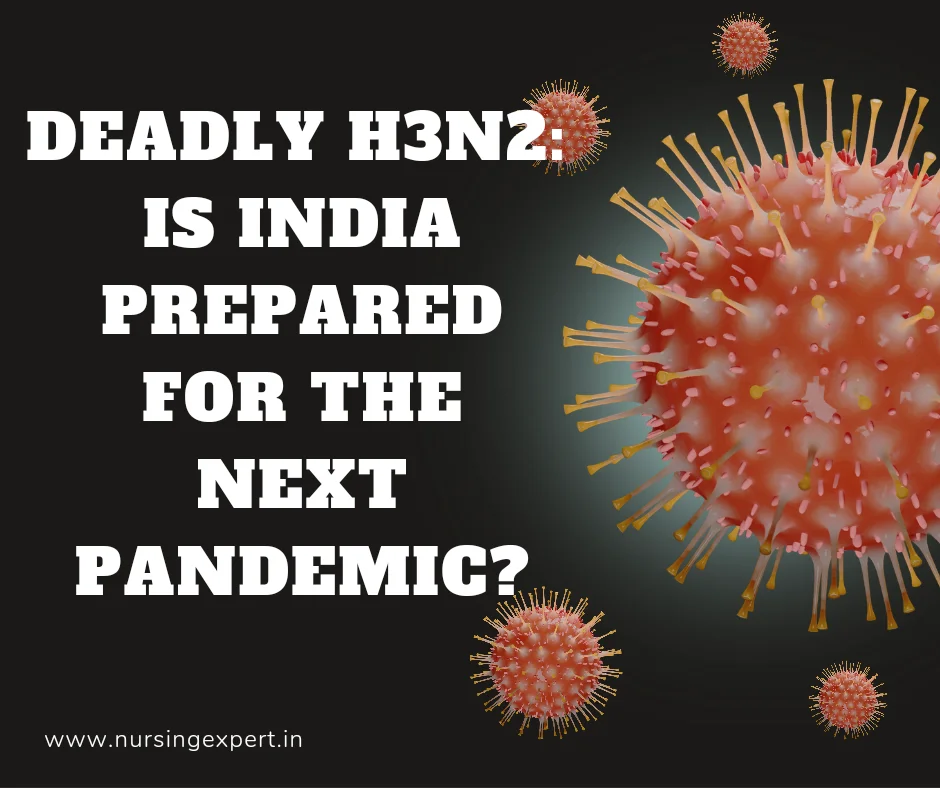According to the Indian Council of Medical Research (ICMR) and the Indian Medical Association (IMA), there has been a rise in the number of cases of influenza in India with symptoms similar to COVID-19. The respiratory troubles are being caused by the H3N2 subtype of influenza A, and hospitals across the country have reported thousands of cases over the past few months. The flu can cause fever lasting 3-5 days and a persistent cough that can last up to three weeks.
Thank you for reading this post, don't forget to subscribe!
Among the patients with H3N2 flu, 92% had a fever, 86% had a cough, 27% had breathlessness, and 16% were wheezing. Additionally, the ICMR surveillance found that 16% of such patients had pneumonia, and 6% had seizures. The ICMR stated that “about 10% of patients suffering from severe acute respiratory infections caused by H3N2 needed oxygen, and 7% required ICU care.”
The IMA has requested doctors not to prescribe antibiotics to patients until they confirm whether the infection is bacterial, as this can lead to antibiotic resistance. Currently, most cases of fever, cough, sore throat, and body aches are cases of influenza, for which antibiotics are not required.

Classification of H3N2 Virus
H3N2 is a subtype of influenza A virus, which is a type of RNA virus belonging to the Orthomyxoviridae family. Influenza viruses are classified based on the type of their surface glycoproteins, hemagglutinin (H) and neuraminidase (N), which are involved in viral attachment and release from host cells. There are 18 known hemagglutinin subtypes and 11 known neuraminidase subtypes of influenza A viruses. H3N2 is one of the subtypes that can cause human influenza, along with H1N1 and influenza B. Influenza viruses undergo frequent antigenic changes, referred to as antigenic drift, which allows the virus to evade host immunity and cause seasonal epidemics.
Symptoms of H3N2 virus in India include:
- Fever lasting 3-5 days
- A persistent cough lasting up to three weeks
- Breathlessness
- Wheezing
- Sore throat
- Runny or stuffy nose
- Body aches
- Fatigue
- Headache.
Precautions From H3N2:
Do’s:
- Wash your hands frequently with soap and water or use an alcohol-based hand sanitizer.
- Cover your mouth and nose with a tissue or your elbow when you cough or sneeze.
- Avoid close contact with people who are sick.
- Stay home if you are feeling sick and seek medical attention if needed.
- Get enough rest and drink plenty of fluids to help your body fight off the infection.
- Use over-the-counter medications to relieve symptoms such as fever, cough, and sore throat.
- Wear a face mask if you have respiratory symptoms to prevent spreading the virus to others.
Don’ts:
- Do not go to work or school if you have symptoms of H3N2 or the flu.
- Do not touch your eyes, nose, or mouth with unwashed hands.
- Do not share personal items such as towels, utensils, or drinks with others.
- Do not take antibiotics unless prescribed by a doctor, as they are not effective against viral infections like H3N2.
Impact of H3N2:
A. Economic impact of H3N2:
- The rising cases of H3N2 flu in India can lead to increased healthcare costs for individuals and the government.
- The flu can cause individuals to miss work or school, resulting in lost productivity and wages.
- The healthcare system may become overburdened with the increased number of patients seeking treatment for flu-like symptoms.
B. Public health impact of H3N2:
- The spread of H3N2 flu can strain the healthcare system and resources, especially during a pandemic when hospitals are already overwhelmed with COVID-19 patients.
- The flu can cause severe illness and even death, particularly in vulnerable populations such as the elderly, young children, and those with underlying health conditions.
- The risk of co-infection with H3N2 and COVID-19 can lead to more severe illness and complications, potentially putting additional strain on the healthcare system.
C. Social impact of H3N2:
- The H3N2 flu can lead to social disruption as individuals are advised to avoid public gatherings and stay home when sick.
- Fear and anxiety around the flu can lead to panic buying of medical supplies and medications, resulting in shortages and hoarding.
- The flu can also cause stigma and discrimination towards individuals who are sick or have recovered from the flu.
Overall, the impact of H3N2 in India highlights the need for increased awareness, preparedness, and resources to address the public health and economic impacts of infectious diseases.
Conclusion
The rising cases of H3N2 flu in India have significant impacts on the economy, public health, and social well-being. The flu can cause severe illness and even death, particularly in vulnerable populations such as the elderly and those with underlying health conditions. The risk of co-infection with H3N2 and COVID-19 can lead to more severe illness and complications, potentially putting additional strain on the healthcare system. To address the impact of infectious diseases like H3N2, there is a need for increased awareness, preparedness, and resources. Individuals should take necessary precautions to prevent the spread of the flu, and the government and healthcare system should work together to mitigate the economic, public health, and social impacts of the H3N2 outbreak in India.
FAQs
What is H3N2?
H3N2 is a subtype of the influenza A virus that can cause flu-like symptoms such as fever, cough, sore throat, runny or stuffy nose, body aches, fatigue, and headache.
What are the symptoms of H3N2 in India?
Symptoms of H3N2 in India include fever lasting 3-5 days, a persistent cough lasting up to three weeks, breathlessness, wheezing, sore throat, runny or stuffy nose, body aches, fatigue, and headache.
How is H3N2 treated?
H3N2 is treated with antiviral medications, which are most effective when taken within the first 48 hours of symptoms. Treatment also includes rest, hydration, and symptom management.
How can I prevent getting H3N2?
To prevent getting H3N2, individuals should practice good hygiene such as washing hands frequently, avoiding close contact with sick individuals, and covering the mouth and nose when coughing or sneezing. It is also recommended to get vaccinated against the flu.
Can H3N2 and COVID-19 occur simultaneously?
Yes, co-infection with H3N2 and COVID-19 can occur simultaneously, leading to more severe illness and complications. It is essential to follow guidelines and precautions to prevent the spread of both diseases.


